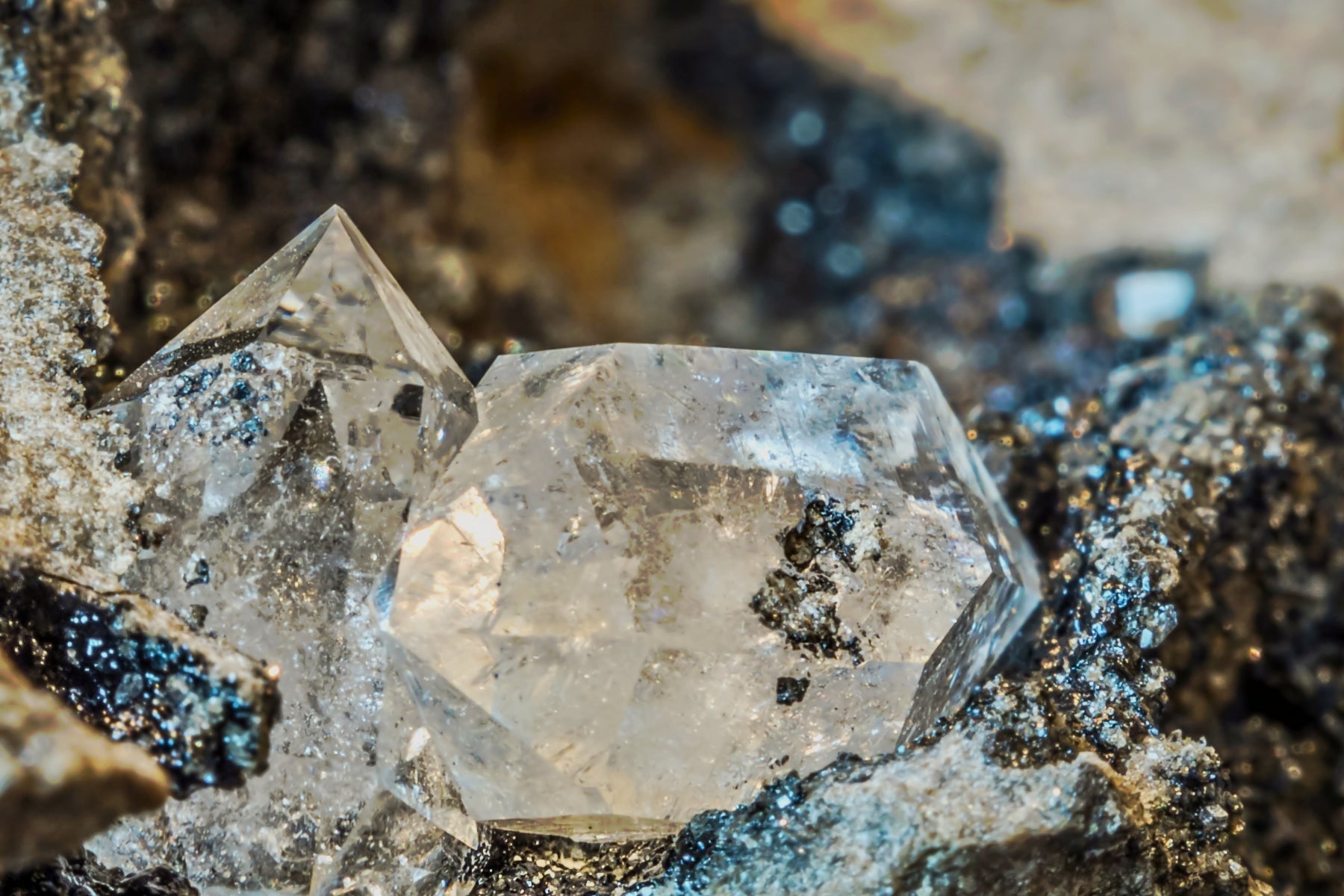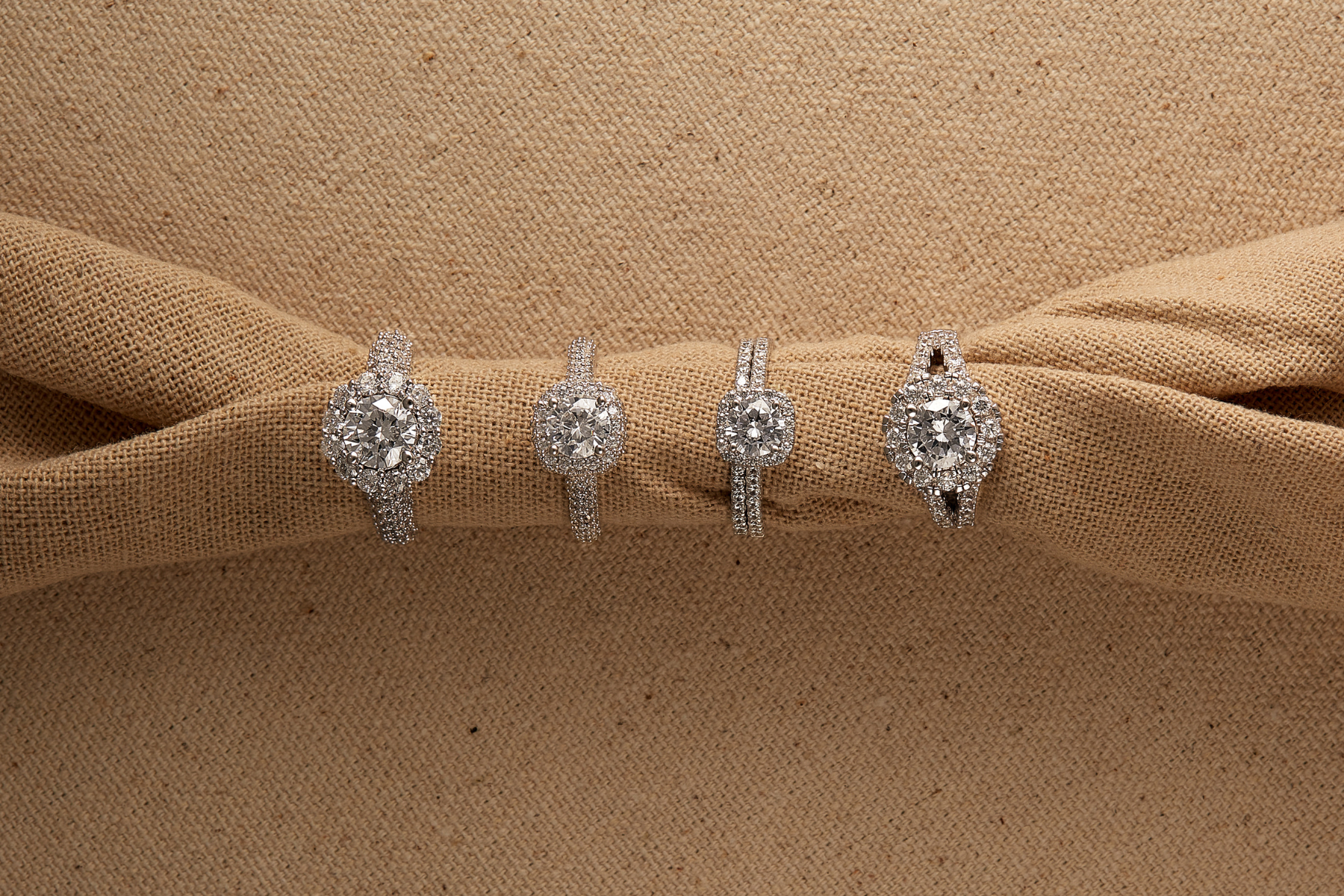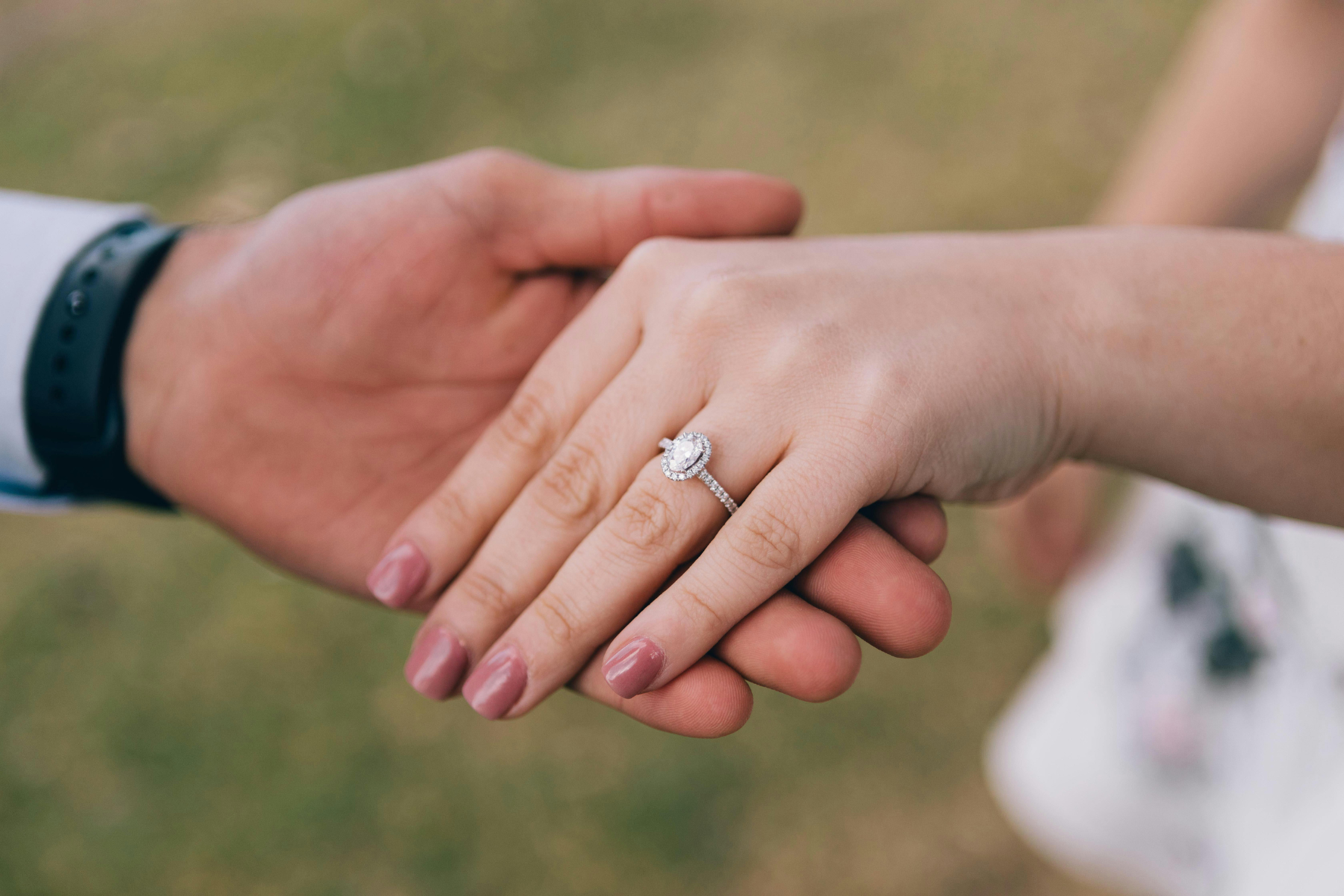
How Are Diamonds Made: The Origins of Natural Diamonds
Diamonds are unquestionably beautiful. It's one of the reasons they are so sought after. They're used as the crowning glory in engagement rings. They are ideal as a birthday gift for girls or as a gift to your partner for your 60th wedding anniversary. There are so many examples where diamonds are considered a girl's best friend and a guy's best buy.
But you'd never think so if you actually found them straight out of the ground. Instead, they look like chunks of glass embedded in rock. They look rough and lack the brilliance and beauty we all associate with this particular precious gem. So, how are diamonds made? What does it take for diamonds to end up so bright and shiny? What about manmade diamonds? Read on to learn all about how diamonds are made.
Diamond History
Diamonds have been around for centuries. They are considered one of the most valuable gems in the present times. Here’s a timeline of the sparkling history of diamonds.
800-1000 BC

Diamonds were believed to have been first discovered in India, approximately 3000 years ago. Historians estimate that Indians were already trading in diamonds as early as the fourth century BC. These precious stones were only sold to India’s very wealthy classes.
1400-1700

Gradually, Indian diamonds found their way to Western Europe. By the end of the 1400s, diamonds were bought by Elite classes in Europe as fashionable accessories, set as accent points among pearls in wrought gold.
1866-1990

While diamond origins can be traced back to India, the rise of the diamond market began in the African continent, upon the discovery of more diamonds in South Africa.
In 1888, entrepreneur Cecil Rhodes put up the De Beers Consolidated Mines Limited which focused on mining diamonds. From well under a million carat of diamonds annually produced in the 1870s, miners were able to collect three million carats a year in the 1920s.
In 1982, a new mining company (Jwaneng) began in Botswana, boasting of a prolific source of diamonds. De Beers contracted with Botswana to buy the company and the country set out to build its own diamond-cutting industry.
The 2000's

Diamond mining expanded with the discovery of sources in Australia and Canada. As more people became aware of this precious stone, the demand for diamonds continued to increase.
The rarity, beauty, and natural brilliance of diamonds made them a premium stone for fine jewelry, particularly engagement and wedding rings.
Chemistry of Diamonds
Diamonds are mostly made of carbon which is one of the most common elements in the world. All human beings, for example, are also composed of carbon. So is graphite which is a lot softer than our precious gem. What makes diamonds different from all other carbon-based things is how the carbon atoms have bonded.

The carbon atoms are exposed to an extremely high temperature and pressure, causing them to form a tetrahedral bond where each carbon atom links to three other carbon atoms. This results in the formation of a strong, rigid lattice structure. The rigidity of the diamond structure does occasionally allow some elements to attach to it such as nitrogen and boron. These same elements not only changes the diamond's chemical structure a bit, they also affect the color of the gem.
How Long Does It Take Diamonds to Form?
The simplest answer to how diamonds are formed is carbon + pressure (650,000 psi to 850,000 psi) + temperature (900°C to 1300°C). But that doesn't take into account the length of time it takes to create a tough diamond. In fact, it takes anywhere from 1 to 3.3 billion years for a diamond to be created naturally. Raw carbon needs to be subjected to a great deal of pressure which occurs around 90 to 120 miles underneath the surface of the Earth. Volcanic activity can cause these deposits to surface.
Cutting and Polishing
Now that we know how diamonds are formed, the next thing we need to discuss is how they become so brilliant and polished. When you first dig out a diamond, it looks very rough and chunky. That being said, it typically features top and bottom points as well as a wide middle. Usually, the diamond looks like a square when viewed from the top.
Before these crude diamonds undergo cutting and polishing, they must first be sorted according to grade and diamond quality. Only those that are considered "gem quality" will end up being transformed into beautiful jewelry. The cutting and polishing of diamonds involves several steps. They need to be sawed, rounded, lopped, and then finished in order to yield the beauty within. How a diamond is cut and worshipped will depend on a variety of factors such as clarity and crystallographic orientation.
How Are Lab-Grown Diamonds Made?
Because it takes billions of years to make natural diamonds, some companies took it upon themselves to find an alternative: man-made diamonds. They learned how to make diamonds in a laboratory by replicating the conditions that cause diamonds to form. This process is called High Pressure High Temperature (HPHT). It uses a growth chamber where a piece of carbon is subjected to high pressure and temperature until it dissolves in a molten metal. The carbon atoms will travel through the metal to a diamond seed which then produces a man-made diamond crystal.
An alternative process is the Chemical Vapor Deposition (CVD). Unlike HPHT, this method utilizes carbon-rich gas such as methane. Inside a vacuum chamber, the gas is broken down into carbon and hydrogen atoms. The atoms are then deposited onto the diamond seeds which results into man-made diamonds.

How Do Man-Made Diamonds Compare to Mined Diamonds?
Visually, you won't be able to tell a natural diamond from a lab-grown one. However, there are differences due to the growth conditions in which they are exposed to. One major difference is in their crystal shape. Natural diamonds grow as crystals that have eight equilateral triangular faces (octohedral). Man-made ones grow as octohedral and cubic six equivalent square faces) crystals.
Lab-grown diamonds are usually colorless or nearly colorless while natural ones come in a variety of colors including pink, blue, red, and green. Take note that man-made diamonds can be subjected to certain treatments in order to produce certain colors. Both types of diamonds can have inclusions. However, lab-grown ones feature small metallic inclusions and flux-like inclusions that can't be found in natural diamonds.
While both diamonds are visually attractive, natural diamonds are the better choice. They are much more valuable. Their value increases over time and their pricing is more stable. Moreover, natural diamonds are more durable and better for everyday wear which makes them the more ideal choice for jewelry.
Moissanite VS Diamond
A moissanite is a diamond stimulant. It is a gemstone that looks similar to a diamond but it does not have a diamond chemical structure. A moissanite is natural but rare. When you compare moissanite vs diamond side by side, you'll see that diamonds are much harder. They rate a 10 on the Mohs Scale of Hardness and are considered the hardest mineral in the world.
A moissanite, on the other hand, has a hardness of 9.25/10. It is one of the hardest substances on Earth and very durable. In terms of brilliance, the moissanite sparkles more compared to the diamond. It flashes a bright, rainbow light. However, it does emit a "disco ball" effect that not everyone likes.
Diamonds, on the other hand, have a type of brilliance that is very distinct. They reflect light in three different ways - brilliance, dispersion, and scintillation. As for color, a moissanite is clear or nearly colorless. However, in certain lights, it gives off a yellow or grayish hue. The larger the stone, the more noticeable the colors are. Colorless diamonds, on the other hand, do not have any traces of yellow, gray, or brown. They have a dazzling white appearance.

7 Fun Facts About Diamonds
Diamonds are far more interesting than many of us might believe. Here are some interesting and little-known facts about diamonds:
1. Romans valued diamonds above all else, including gold
The ancient Romans believed that diamonds were tears cried by Gods. They also believed that Cupid's arrows had diamonds on their tips. This is perhaps the earliest association of diamonds with romantic love. Sweet!
2. Diamond is one of the hardest natural substances on Earth. Nothing can scratch and ruin the brilliance of a diamond other than another diamond.
3. 250 tons of ore produce a 1-carat diamond. To produce a one-carat polished diamond of gem quality, 250 tons of earth has to be mined!
4. The biggest diamond discovered was the Cullinan Diamond. It weighed 3,106 carats! This massive stone was cut into 9 pieces. Today, three of the remaining pieces can be found in the British Sovereign's Royal Scepter located in the Tower of London.
5. The most expensive diamond ring in the world is the Pink Star. Pink Star is made up of 59.60-carat pink diamond. In 2017, it was sold at an auction in Hongkong at US$71.2 million to Chow Tai Fook Enterprises.
6. Scientists have discovered a planet that is composed mostly of carbon. Do you know what's amazing? 1/3 of carbon planet is made of pure diamond and during volcanic eruptions, it is possible that diamonds could come up to the surface.
7. Star Lucy is the universe's largest diamond. The said planet orbits a nearby star in the Milky Way, which according to scientists, is essentially a diamond with ten billion trillion carats! Scientists named the star "Lucy" after the song from Beatles “Lucy in the Sky with Diamonds.”
About Diamonds: FAQ
1. When did diamonds become popular?
Diamonds have been around since the fourth century but it was not until around the 1930s when they became increasingly popular. With the increase in worldwide production of diamonds, along with massive marketing campaigns of the company, the sales of diamonds increased by 50% in just three years.
2. Where are diamonds found?
Only 35 countries are known to have natural sources of diamonds. These precious gems are formed in the earth’s mantle, hundreds of miles beneath the Earth’s surface.
3. Who first discovered diamonds?
While Indians have known about diamonds since ancient times, the discovery of diamonds in Cape Colony, South Africa, paved the way to the rise of this billion-dollar industry. The first diamond was discovered by Erasmus Jacobs (who was only 15 years old back then) on the farm of his father, near the south bank of the Orange River.
4. How are diamonds made naturally?
Diamonds are made of carbon bonded together under extremely high temperatures until they form crystals. Raw carbons are subjected to intense heat 90 to 120 miles underneath the surface of the Earth. Lucky for us, nature has its way of delivering diamonds to the surface of the earth through volcanic eruptions.
5. How are lab-grown diamonds made?
Scientists can form diamonds using a process called High-Pressure High Temperature (HPHT) which mimics the natural conditions needed to form these precious stones. Alternately, diamonds can be formed using the Chemical Vapor Deposition (CVD). This process utilizes carbon-rich gas such as methane placed in a vacuum chamber.
6. How long does it take diamonds to form?
It takes 1 to 3.3 billion years for a diamond to form naturally. Lab-grown diamonds, on the other hand, typically take less than a month to grow.
7. How do man-made diamonds compare to mined diamonds?
While natural and manmade diamonds are both visually attractive, they differ in shapes, colors, and value. Natural diamonds come in different colors, such as pink, yellow, blue, and green while lab-grown diamonds are colorless or near-colorless (though they can be subjected to treatments to achieve certain colors). As to the price, natural diamonds are far valuable than their lab-grown counterparts.



